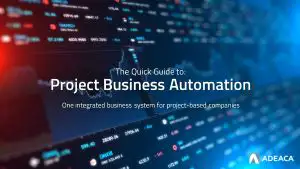Many enterprises worry that moving their ERP (enterprise resource planning) systems to cloud means that they’re going to lose the investments they’ve already made in their on-premise ERP solutions.
For large organizations, however, that’s not necessarily the case. Many enterprises use two-tier ERP, which means running two integrated ERP systems simultaneously.
Typically, the legacy application, also called the Tier 1 system, is deployed at the corporate level, while the cloud-based ERP, or Tier 2, is managed at the plant, division, or subsidiary level.
The two-tier model lets you maintain your investments in your on-premise ERP system, while providing your subsidiaries with a more flexible, agile cloud-based ERP system and giving corporate the real-time visibility into operations that it needs.
You could decide to run two-tier ERP for a number reasons. For instance, “it allows an existing legacy ERP system to remain functional across the organization, which reduces the costs associated with replacing the system, while letting individual business units deploy ERP systems that may be better suited to their needs,” according to TechTarget.
You could also adopt a two-tier ERP model if your organization operates globally and has to respond to location-specific business requirements in a number of countries.
Companies that have issues implementing the legacy ERP platform in smaller subsidiaries and joint ventures typically deploy a two-tier ERP model. According to a report by Accenture, they opt for two-tier ERP for three main reasons:
• The core ERP solution is too complex for the needs of the subsidiaries.
• The core ERP solution is too expensive for the local operation.
• The subsidiaries can’t afford to wait for the next release of the core ERP rollout because their businesses are changing too quickly.
For example, Northrop Grumman Corp., a 25-billion company specializing in defense and technology products and services for the global market, implemented a two-tier ERP strategy to standardize its business processes.
Northrop Grumman decided to deploy a two-tier ERP strategy, using an enterprise SAP backbone for U.S. operations combined with an easier-to-use and easier-to-support implementation of ADEACA ONE to manage subsidiary operations in select countries.
The two-tier strategy lets an organization shift its business model integration strategy, “preventing it from needing to consolidate new and different entities into one solution while still enabling consolidating financial reporting,” according to another Accenture report.
Companies that implement a two-tier ERP strategy can realize a number of benefits, including comprehensive functionality, improved innovation, meeting global requirements and better operational control.
Additionally, two-tier ERP can be deployed quickly and cost effectively, so than an enterprise that has an existing ERP Tier 1 functionality can take more control of its operational performance with easily configurable ERP Tier 2 solutions.
In situations where a two-tier ERP strategy is the best option, it can significantly cut capital and operational costs, allow for greater agility, accelerate acceptance by end users as well as offer the flexibility to support growth and innovation, according to Accenture.
By taking a two-tier ERP approach that relied on ADEACA ONE to manage subsidiary operations, Northrop Grumman was able to standardize and coordinate its operations, ensure a higher degree of visibility and increase confidence in contractual customer deliveries as its international business expands.










